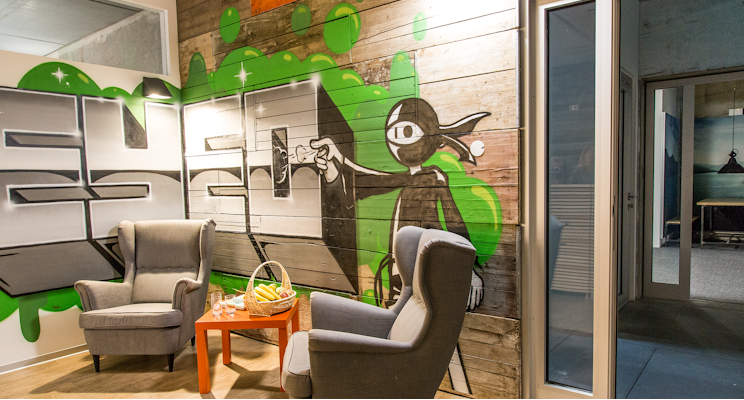It’s been a little over two months since I’ve joined eyeo, the lesser-known German company behind the much talked-about Adblock Plus, Adblock Browser, Acceptable Ads and Flattr Plus.
Many of you reacted to this update at some point last month, once I made it public on my LinkedIn profile. I thought long and hard before turning the “Notify your network?” switch to “Yes”; eventually, I decided that I did want to find out what my peers thought of the first major career move I made in 6 years. Your comments and questions distilled down to three recurring topics.
Why are you giving up your independence?
You can look at this whole “giving up independence” through many different glasses, some rosy and some in shades of gray. For nearly six years, ever since I left Ireland and my job at Facebook, I worked as an independent consultant helping monetize web properties. This was a [long] breath of fresh air after several years in big companies (prior to Facebook, I worked at Google) where, while I loved my work and the opportunities I was given, I simply could not see myself going on forever and retiring from.
Life as a consultant was great: I could handpick the clients and projects I worked on, I could make my own schedule and could work from anywhere as long as I could hop online. Whoever said “home is where the WiFi connects automatically” was not mistaken one binary digit (see what I did there?) However, something was missing and it was only earlier this year that I fully understood what it was. I yearned to be, once more, part of a team. I wanted to work on something bigger and more important, and be able to do so while advancing causes that I came to deeply care about: user choices, privacy and security.
For all these reasons, eyeo seemed like the improbable yet obvious choice. My role – which sees me primarily supporting the Acceptable Ads initiative – allows me to do all that I wanted, in a way that alleviates the downsides of traditional office jobs. I still get to choose what I work on, still pretty much make my own schedule and can still work from wherever I get good WiFi.
So you’ve turned to the dark side of digital advertising?
If that’s what you’d like to call it, then yes, I most certainly have. My only regret is that I couldn’t time it to start on May the 4th!
Joke aside, although many fanciful talking heads would have it otherwise, ad blocking is a user-generated and user-sustained phenomenon that can and should lead us to a better ads ecosystem. If eyeo provides a path to that better ecosystem (which I of course hope!) that’s fine; if it doesn’t, someone else will. What eyeo is trying to build is a holistic solution that looks at how digital advertising and content monetization can progress while respecting users, their rights and their choices:
- Adblock Plus gives users control over their browsing and content consumption experience, particularly when one takes the time to look under the hood and customize settings to meet their needs. I, for example, use other filter lists in addition to the basic blocklist provided by EasyList (Malware Domains, Adware filter); I allow some non-intrusive advertising; and I have a pretty extensive list of whitelisted domains and might even write my own filters when needed.
- Acceptable Ads (and soon the Acceptable Ads Committee) provide a way to reward good advertising (ads that are non-intrusive and follow a few basic criteria).
- Flattr Plus completes the eyeo portfolio by offering an alternative to advertising, helping publishers monetize their content via micropayments from readers instead.
Ad blocking, user rights and content monetization can only be looked at holistically, in an environment that has the means and tools to cater to all. Our industry is in a bit of a pickle right now and this is a natural consequence of us all having failed to see the larger picture, choosing to chase the quick wins instead: advertisers, publishers and ad tech vendors all share the blame.
An ad blocker comes into this narrative from the detached and unique position of placing user interests first, while conciliating the often-conflicting interests of publishers and advertisers. This is why I wanted to work at an ad blocker rather than only be able to serve the industry from a narrower perspective. I’m happy to further this discussion with any of you, particularly around the use and adoption of Acceptable Ads, which is where my focus is right now.
Well … how is it?
Pretty, pretty, pretty, pretty good.
I had been following eyeo for quite some time, as the company’s been in the media mostly due to the trials and tribulations of Adblock Plus and the Acceptable Ads initiative. I was aware of the challenges but also of all the opportunities that lay ahead. Most importantly, I’ve been an Adblock Plus user for many years, and I know I understand the plight of both users (such as myself when in a private capacity) and publishers (such as my former clients).
What I found once I checked into the Cologne office for my month-long introduction confirmed that all work and resources directly support the company’s mantra to put users in control of a fair, profitable web. I’ve worked in distributed or remote teams before but the cohesion and the openness I’ve met at eyeo is off the charts. That was the first thing that showed me I’d made the right choice.
Last but not least, I’m very fortunate to have basically been given a carte blanche as to what projects to work on, greatly soothing the transition from my previously free-range, unstructured role.
That’s all, for now. I’ll happily go back to the hamster wheel, which at eyeo has no other connotation than a pretty useful (and used!) standing desk. Or sitting, in my case.


